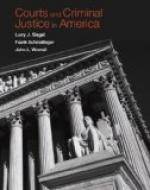About a year and a half ago the little boy of Dr. Scimeca, of 2 Prince Street, New York, was taken from his home. From outside sources the police heard that the child had been stolen, but, although he was receiving constant letters and telephonic communications from the kidnappers, Dr. Scimeca would not give them any information. It is known on pretty good authority that the sum of $10,000 was at first demanded as a ransom, and was lowered by degrees to $5,000, $2,500, and finally to $1,700. Dr. Scimeca at last made terms with the kidnappers, and was told to go one evening to City Park, where he is said to have handed $1,700 to a stranger. The child was found wandering aimlessly in the streets next day, after a detention of nearly three months.
The second case was that of Vincenzo Sabello, a grocer of 386 Broome Street, who lost his little boy on August 26, 1911. After thirty days he reported the matter to the police, but shortly after tried to throw them off the track by saying that he had been mistaken, that the boy had not been kidnapped, and that he wished no assistance. Finallv he ordered the detectives out of his place. About a month later the child was recovered, but not, according to reliable information, until Mr. Sabello had handed over $2,500.
Pending the recovery of the Sabello boy, a third child was stolen from the top floor of a house at 119 Elizabeth Street. The father, Leonardo Quartiano, reported the disappearance, and in answer to questions stated that he had received no letters or telephone messages. “Why should I?” he inquired, with uplifted hands and the most guileless demeanor. “I am poor! I am a humble fishmonger.” In point of fact, Quartiano at the time had a pocketful of blackmail letters, and after four weeks paid a good ransom and got back his boy.
It is impossible to estimate correctly the number of Italian criminals in America or their influence upon our police statistics; but in several classes of crime the Italians furnish from fifteen to fifty per cent of those convicted. In murder, assault with intent to kill, blackmail, and extortion they head the list, as well as in certain other offences unnecessary to describe more fully but prevalent in Naples and the South.
Joseph Petrosino, the able and fearless officer of New York police who was murdered in Palermo while in the service of the country of his adoption, was, while he lived, our greatest guaranty of protection against the Italian criminal. But Petrosino is gone. The fear of him no longer will deter Italian ex-convicts from seeking asylum in the United States. He once told the writer that there were five thousand Italian ex-convicts in New York City alone, of whom he knew a large proportion by sight and name.* Signor Ferrero, the noted historian, is reported to have stated, on his recent visit to America, that there were thirty thousand Italian criminals in New York City. Whatever their actual number, there are quite enough at all events.




